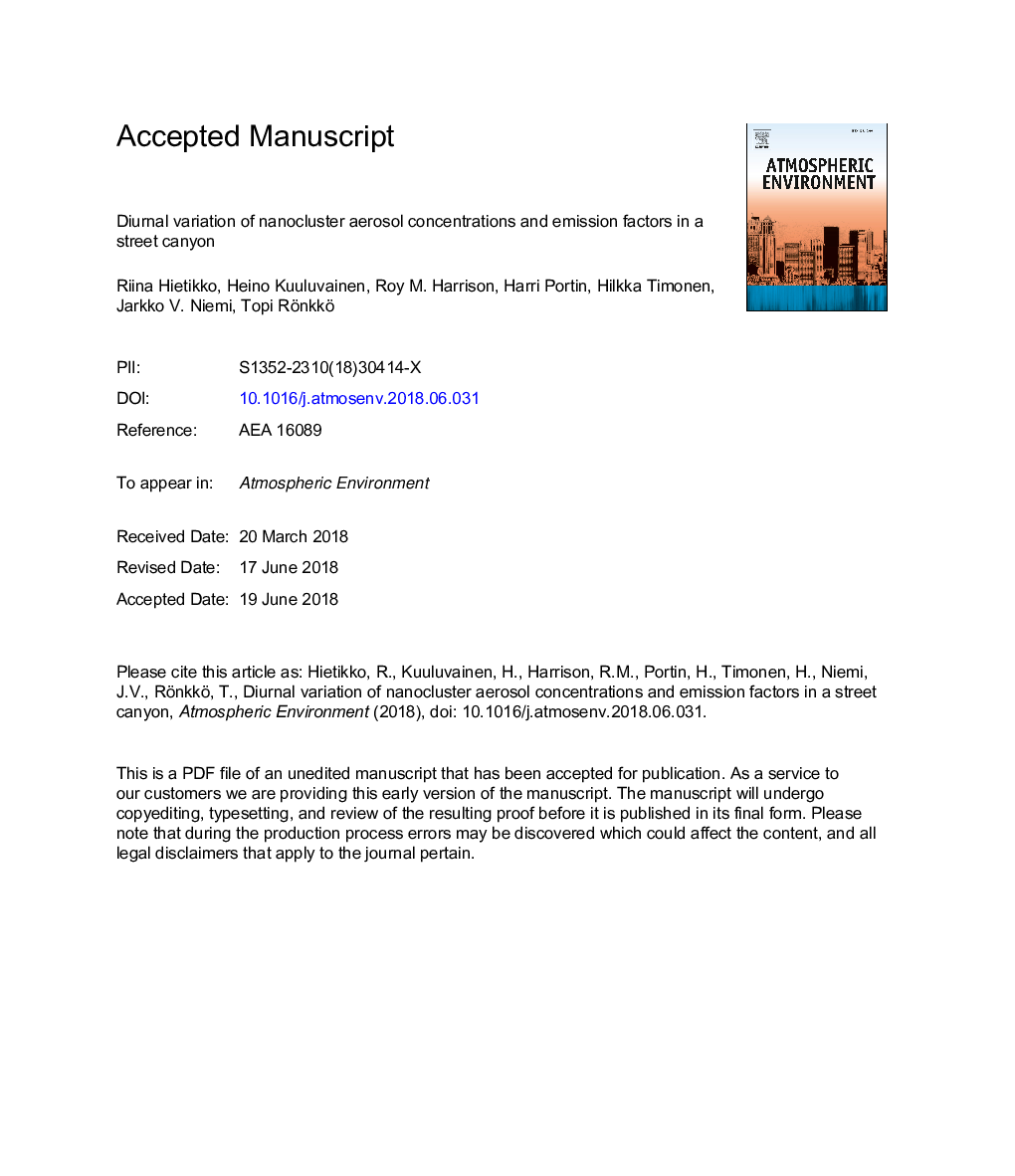| Article ID | Journal | Published Year | Pages | File Type |
|---|---|---|---|---|
| 8863529 | Atmospheric Environment | 2018 | 37 Pages |
Abstract
Traffic emits a considerable amount of aerosol particles in urban areas and has also recently been shown to be a significant source of sub-3 nm particles. In this study, the concentration of sub-3 nm particles, here referred to as nanocluster aerosol (NCA), was continuously measured with 1â¯s resolution in a busy street canyon in the city of Helsinki, Finland, for a month period in 2017. NCA concentrations were carefully analyzed with respect to the time of day, the wind direction, the condensation sink, the concentration of sub-7 nm particles, the total particle size distribution, and the CO2 concentration, from which the emission factors for the NCA were calculated. The concentration of the NCA seemed to follow a similar trend to that of sub-7 nm particles. Diurnal variation of the NCA concentration divided into weekdays and weekends and sorted according to the wind direction followed the amount traffic. The NCA concentration was at highest when wind was blowing directly from the road, during the rush hours or when the condensation sink calculated from the particle size distributions was low. The NCA concentration was in line with the traffic-related nucleation mode of the size distribution and its diurnal variation, and the NCA fraction comprised a relatively large part of the total particle number concentration. Average emission factors for the NCA and sub-7 nm particles were 9.36 â
1014â¯kgfuelâ1 and 2.73 â
1015â¯kgfuelâ1, respectively. Diurnal variation of the emission factors showed an increase in the night, which may result from a dependency of the emission factors on traffic composition, temperature, condensation sink or the driving mode of vehicles.
Related Topics
Physical Sciences and Engineering
Earth and Planetary Sciences
Atmospheric Science
Authors
Riina Hietikko, Heino Kuuluvainen, Roy M. Harrison, Harri Portin, Hilkka Timonen, Jarkko V. Niemi, Topi Rönkkö,
